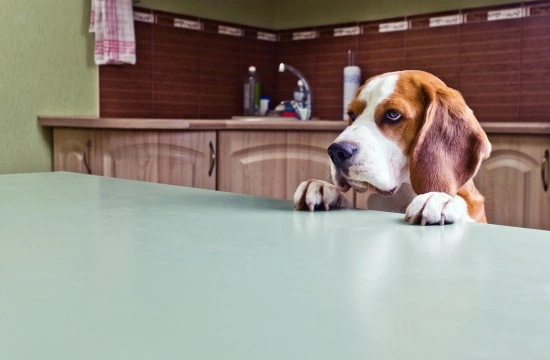
Some commonly overlooked hazards in your dog’s home
While the wider world theoretically presents more potential risks to dogs than the safety of their own homes, nevertheless, there are a range of potential hazards within the home too that may pose a risk to your dog. All of us are aware of the basic rules, such as keeping medicines and cleaning compounds out of the reach of dogs, but there are many other potential dangers within the home too that every dog owner should be aware of.
In this article, we will provide you with a handy checklist of often overlooked risks within the home, in order to help you to dog-proof your accommodation, and keep everybody safe! Read on to learn about helping your dog to avoid risks within the home.
Chemicals
All dog owners are generally very careful about keeping toxic products such as bleach and antifreeze well out of the reach of their dogs, but there are many other potential risks that are often overlooked. Toxins that you may use around the doors of the home or in the garden, such as slug pellets or poisoned rat traps are also potential risks. Don’t forget that if you should be unlucky enough to own a dog that might consider eating a rat or other rodent, your dog may suffer from the effects of any poison that their prey first ingested.
Carbon monoxide
All homes that use any form of gas for cooking or heating should have a CO alarm installed to provide an early warning in the case of dangerously high levels of carbon monoxide, and this will help to protect both dogs and people. Bear in mind that if your dog sleeps in the kitchen or utility room where your boiler is present, they will be the first to feel the effects of dangerous levels of carbon monoxide, and may become ill before a carbon monoxide alarm in another part of the house registers the danger. Ensure that all gas appliances are regularly checked and serviced, and that there is a CO alarm present in the room where your boiler is situated.
Nicotine
Any product that contains nicotine presents a potential hazard to your dog; this doesn’t just mean cigarettes and cigarette butts, but also products like e-cigarette liquid and devices, and nicotine gum and patches. Treat any product containing nicotine in the same way that you would any other toxic compound, and keep them safely out of the reach of your dog.
Foreign bodies
If your dog is one of the many that love to chew or are forever picking up objects and carrying them around in their mouths, you should take care to ensure that you do not leave anything risky lying around. Batteries, beads, string, bottle tops, and anything small and flimsy may easily be ingested by a dog that likes to chew, and cause an obstruction within the digestive system. Be aware that some everyday household items are also potentially toxic; for instance, batteries contain lead, which is poisonous if your dog takes it upon himself to chew up a battery.
Cooking and heat
It is good practice to ensure that your dog is not underfoot when you are cooking or preparing food, both so that your dog does not become an annoyance and to keep both of you safe. Cooking of course involves high levels of heat and scalding liquids, and if you spill or drop something hot when your dog is right next to you, they may become burnt or scalded. Also ensure that you keep the handles of any pans on the hob facing inwards and not sticking out, and firmly teach your dog not to jump up or put their paws on the worktop.
Flea treatments
Flea treatments are designed specifically for use on a certain species of animal, or for household use, so never try to multipurpose a flea treatment product. Flea treatments for cats contain different ingredients than those for dogs, and are not suitable to use on dogs; and flea treatment sprays for use on fabrics are not intended for use on pets at all, and may prove harmful or poisonous if applied to the skin of your dog.
Washing machines and tumble dryers
While it is thankfully very uncommon, occasionally, smaller dogs will climb into a warm tumble dryer or open washing machine to explore or snuggle up on warm clothes, which of course can be extremely dangerous if you then close the machine without realising. Keep the doors of washing machines and tumble dryers closed at all times, and check the drum of both machines before you switch them on.
Human medications
In some cases, medications that are prescribed for your dog by your vet will be the same products that are prescribed for people, although the doses are usually very different. However, you should never try to self-medicate your dog, or give them human medications of any kind without first speaking to your vet, as incorrect doses or medications that were not designed for dogs can of course be very toxic.
Bread dough
One foodstuff that never makes it onto the lists of toxic foodstuffs for dogs is bread, although of course bread should not make up part of your dog’s staple diet. However, if you make your own bread at home, un-risen dough can be very dangerous to dogs, as it expands within the stomach and also releases dangerous chemicals as it ferments as part of rising.



